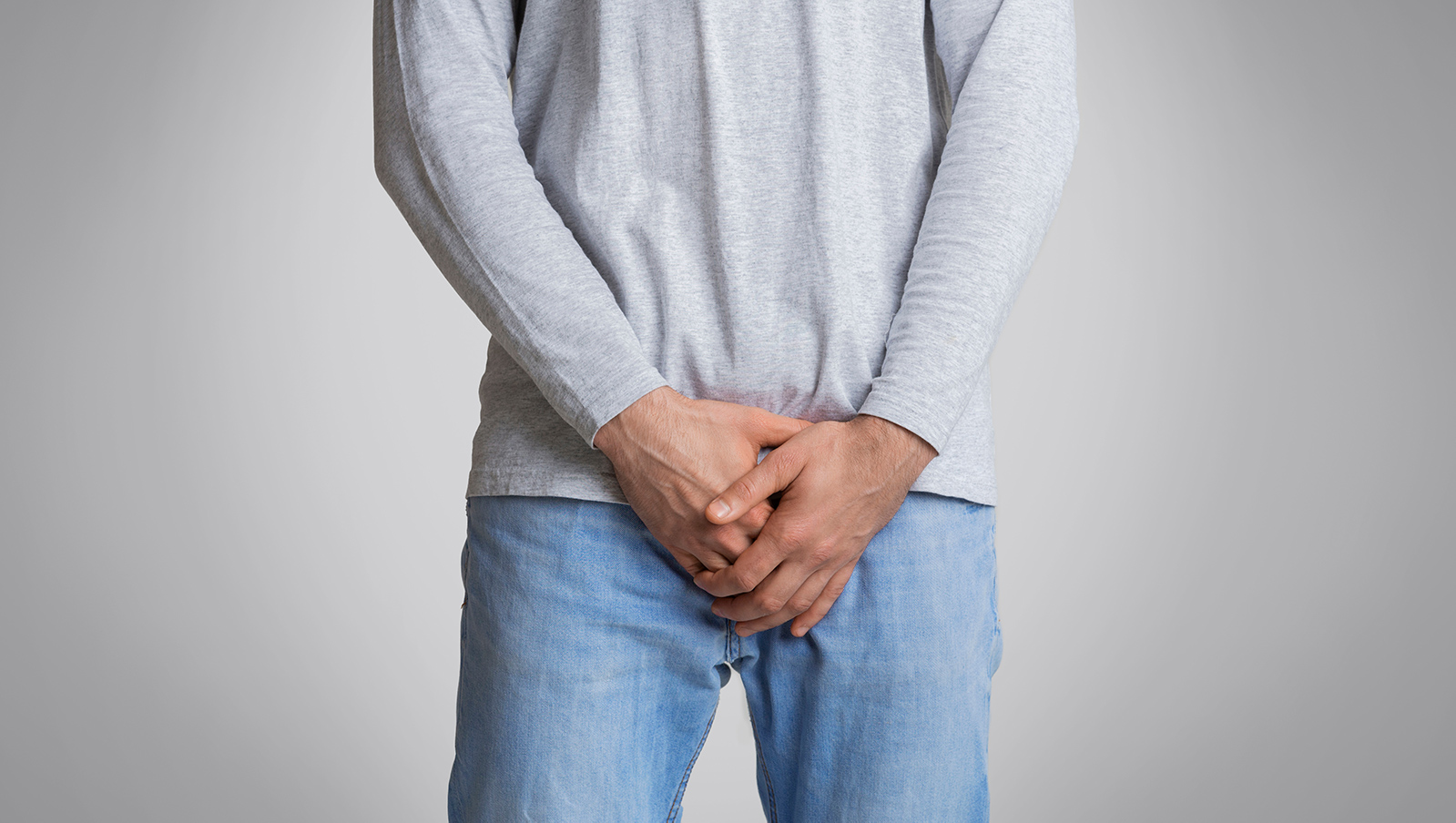Around 2,400 people 1 will get testicular cancer every year in the UK. It’s not the most common form of male-cancer, but it’s really one that everyone should be aware of. Because the earlier you catch it, the easier it is to treat – and checking for symptoms is so incredibly quick and easy, too.
What are testicles?
The testicles sit inside a sac of skin called the scrotum, and hang behind your penis. They are oval or round, and it’s their job to produce sperm and testosterone. Behind each one is a soft tube called the epididymis.
What should a testicle feel like?
The ball inside your scrotum should feel smooth, without any lumpiness or any bumps on its walls.
How do I check my testicles?
1. Get warm
It’s a good idea to have a bath or shower first, because the heat means everything is nice and relaxed – and there’s also a mirror so you can have a good look.
2. Get to know yourself
It’s important to get to know what looks normal for you. It’s normal for one testicle to be very slightly bigger than the other, for example, or hang slightly lower. Lift your penis out of the way for a better look.
3. Get in there
Take your finger and thumb, and gently run or roll them over your testicles so you can feel the whole surface of the testicle through the skin.
What should I be looking for?
Some of the symptoms 2 to look out for include:
- Any unusual difference between testicles, including size, shape and texture
- A hard lump on the front or side of the testicle
- A softer swelling on the testicle
- Enlargement or increase in firmness of a testicle
- Pain or heaviness in a testicle or scrotum
- Any other changes from normal
Some people could also experience back pain, or tenderness in their breast tissue (yes men have this, too).
Do any of those symptoms mean cancer?
Not necessarily. But they should always be taken to your GP to be checked out.
You can ask for a male GP if it makes you more comfortable, and just remember they look at people’s bodies all day long – they’re not going to bat an eyelid, even if you feel a bit awkward.
How often should I check my testicles?
Once a month is about right. Regularly enough to get to know your body, so you notice any changes.
What happens next?
Well there are lots of different types of testicular cancer, and then different stages as that cancer grows. All of that will impact the type of treatment 3 you get. This usually involves surgery to remove the testicle, and possibly radiotherapy or chemotherapy to make sure all the cancerous cells are gone.
The really good news is that testicular cancer is one of the most treatable cancers there is.
How can Equipsme help with testicular cancer?
At Equipsme we’re not shy about talking about testicles, and we’re not shy about telling you we don’t cover cancer treatment.
What we do do is help you get seen by someone fast - and with suspected cancer that’s absolutely key.
1. GP service
If you can’t get an appointment with your NHS GP that suits your working hours, or if you’re squeamish about talking to someone in person, our virtual GP service is there for you 24/7. While they can’t do a physical examination, they can talk you through your symptoms and whether you should seek more specialist diagnosis.
Most appointments are made within 24 hours, there’s no time limit on your consultation, and the 24/7 Health Hero GPs can issue open referral letters that can be submitted as part of a claim to find out if the condition and treatment is covered. And if you’d rather speak to a male or female GP you have the option to choose.
How to make a GP appointment
2. Diagnosis
If diagnosis is part of your plan, it means you’ve got a fast track to getting on top of your health issues. If your claim is covered, you may be able to see an AXA Health specialist at a private hospital near you, and get the health tests and answers you need, faster.
How to see a consultant for a diagnosis
3. Cancer support line
If it is testicular cancer, you’ll have to go back to the NHS for any treatment but you’ll have the support of the Cancer support line from AXA Heath. They can talk you through your diagnosis, treatment options, and help you with any questions or queries.
What is the cancer support line?
How can I find out more?
There’s loads of great resources to find out more about testicular cancer. Here’s some of them:
NHS
Cancer research
Testicular Cancer UK
Movember
Further reading
What is prostate cancer?
How Equipsme supports Men’s Health
How to check your breasts
Sources
1 www.cancerresearchuk.org
2 www.nhs.uk/conditions/testicular-cancer
3 www.nhs.uk/conditions/testicular-cancer
Date reviewed: October 2025

